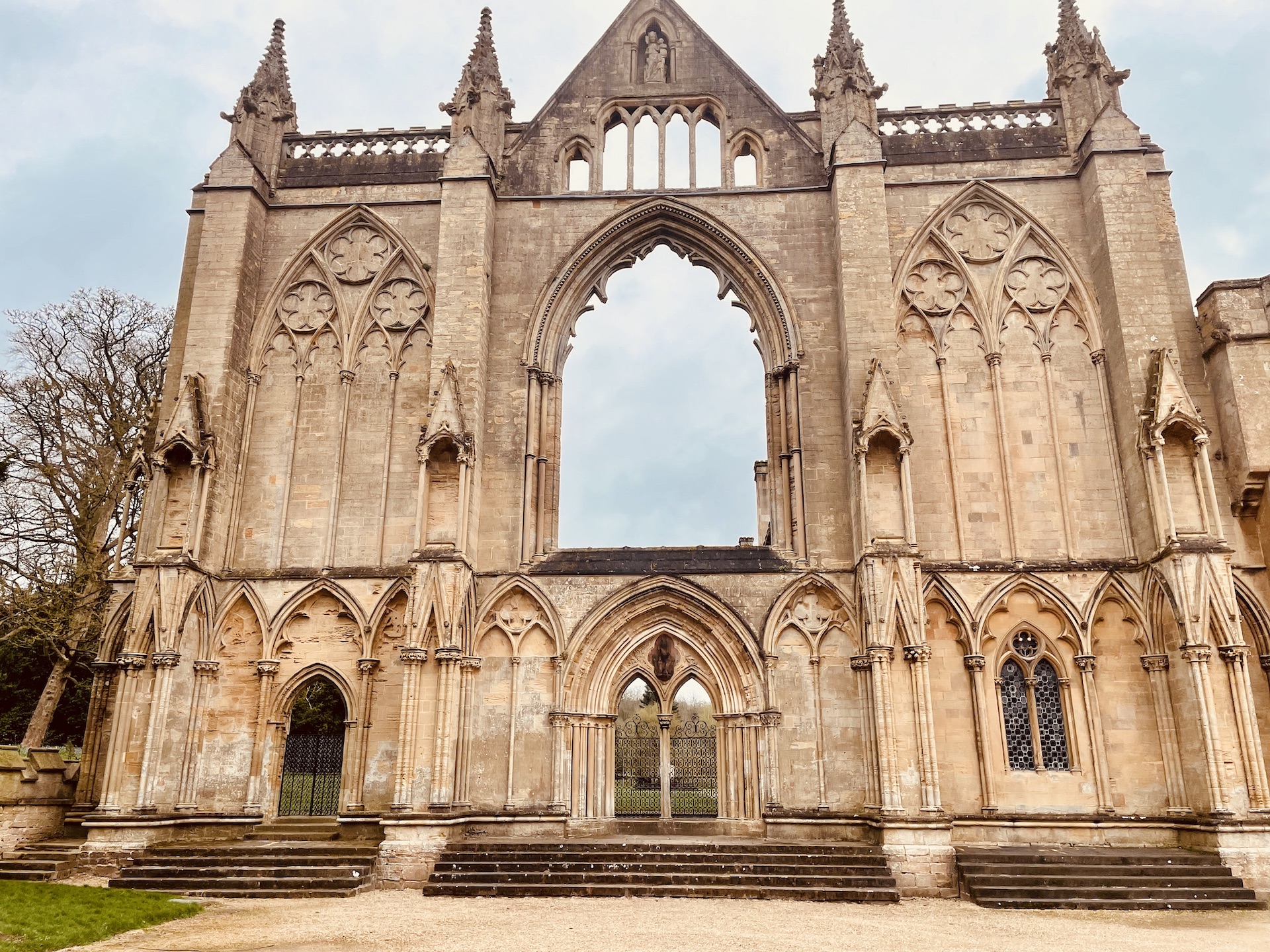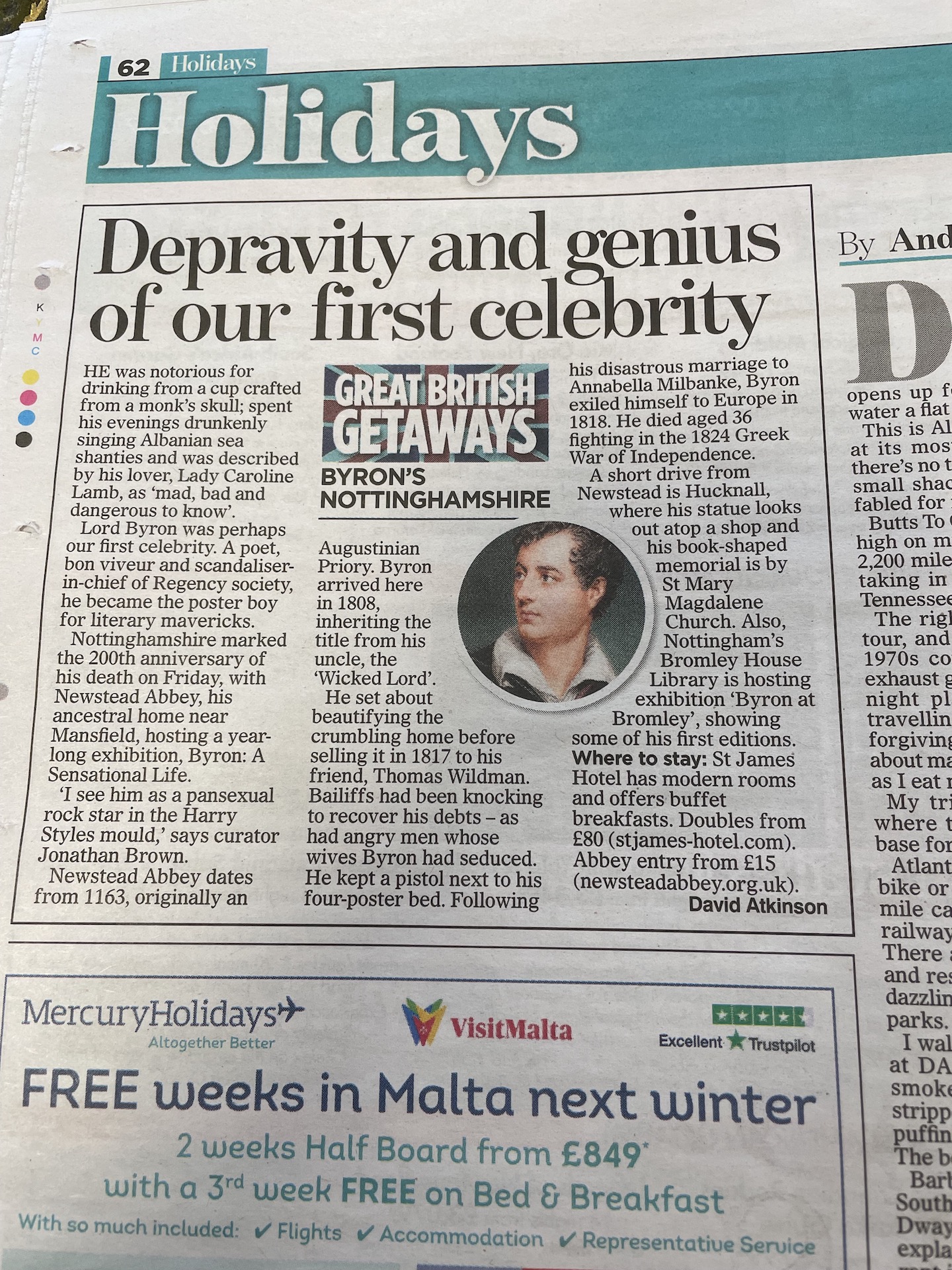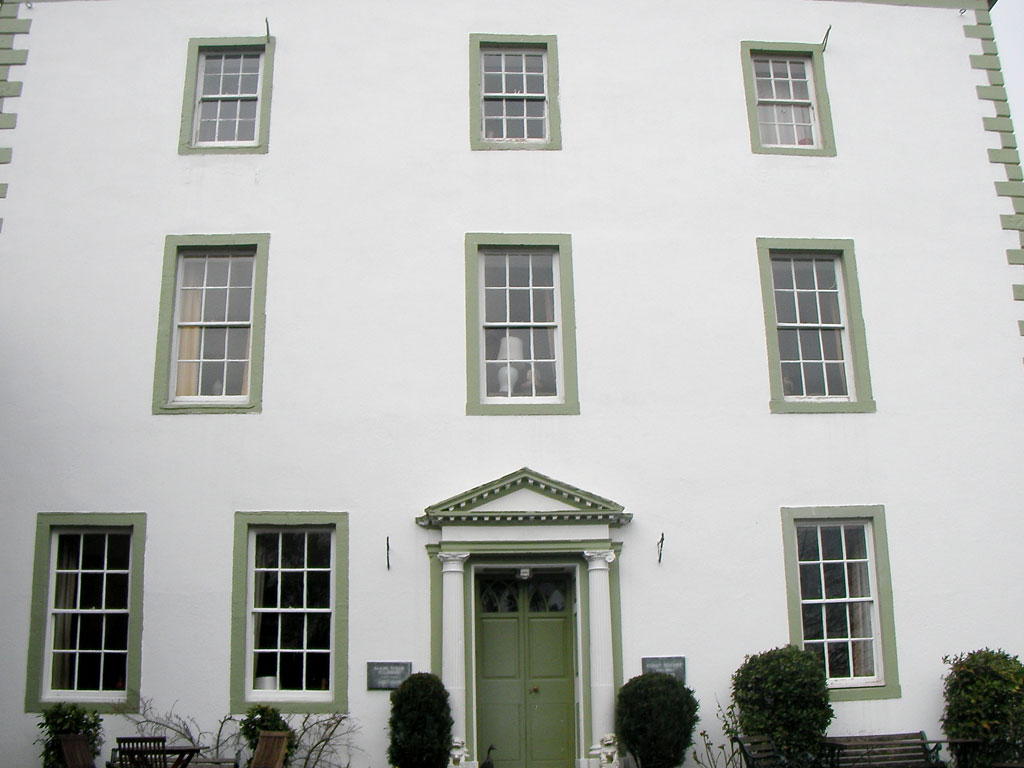
My Lord Byron feature appeared in print in the Daily Mail travel section last week.
The story was based around a visit to Newstead Abbey in Nottinghamshire [pictured above].
The original copy was edited for space, so here’s my first draft of the article below.
He was notorious for drinking from a cup crafted from a monk’s skull. He spent his evenings drunkenly singing Albanian sea shanties and was famously described by one of his former lovers, Lady Caroline Lamb, as “mad, bad and dangerous to know”.
Lord Bryon was, in many ways, the first celebrity. A Romantic poet, bon-viveur and scandaliser-in-chief of Regency society, he became the poster boy for literary mavericks and popularised vampire stories.
Nottinghamshire marks the 200-year anniversary of the death this year [April 19] with Newstead Abbey, his ancestral home near Mansfield, hosting the year-long exhibition, Byron a Sensational Life, showcasing artefacts from the Byron collection.
“I see him as a pansexual rock star in the Harry Styles mould,” says Newstead curator Jonathan Brown. “For all his faults, he would have been great company.”
Newstead dates from 1163 and was founded as an Augustinian Priory, surviving the dissolution of the monasteries under Henry VIII. The Monk’s Room, the former priory oratory with witching marks on the wooden beams, is said to be still haunted by The Black Monk.
Lord Byron arrived at Newstead in 1808 having inherited the title from his uncle, the so-called Wicked Lord, and set about beautifying the crumbling ancestral pile. Drowning in debt, he sold it to his Harrow schoolfriend, Thomas Wildman, in 1817 with the bailiffs and a series of angry husbands, whose wives Byron had seduced, knocking down the door.
Wildman subsequently hung Thomas Phillips’ 1813 portrait of Byron above the hearth in the Great Drawing Room, where he still surveys his adoring fans today.
The exhibition reveals the eccentricities behind the myth and uncovers rare items from the collection. In Byron’s bedroom, I learn he kept a loaded pistol next to his four-poster bed. The Edward III Room has a first edition of Polidori’s novella The Vampyre, inspired by Byron’s rakish appearance, and stanzas from Byron’s The Giaour, which between them inspired Bram Stoker and the Twilight films alike.
The library, meanwhile, documents his multiple affairs and menagerie of animals, including Bruin, a domesticated dancing bear, but also his political convictions. Byron used his first speech in the House of Lords to back the frame-breakers, the lacemakers from Nottingham’s historic lace quarter, who were struggling to maintain their trade during the Industrial Revolution.
Following a disastrous marriage to Annabella Milbanke, and amid scandalous rumours regarding his relationship with his own half-sister, Byron exiled himself to Europe in 1818. He died, aged 36, fighting the Greek War of Independence in 1824, making the eccentric lord a folk hero in Greece.
Byron leaves a legacy across Nottinghamshire, however. A short drive from Newstead is the village of Hucknall, where a statue of Byron looks out regally atop a kitchen shop and his book-shaped memorial is to be found in the graveyard of St Mary Magdalene Church.
Elsewhere, the Bromley House Library, the Georgian townhouse turned subscription library in central Nottingham, hosts the Byron at Bromley exhibition with a first edition and an early guidebook to Newstead amongst the atmospheric collection of dusty tomes and ceiling-high shelves. “I feel many of his circle were drawn to Byron’s inner turmoil,” says Heather Green, library supervisor.
Byron’s scandalous reputation eventually overtook his literary legacy. But with events across Nottinghamshire to mark his anniversary, plus an upcoming BBC Travelogue with Rob Rinder and Rylan Clark tracing his Grand Tour, Byron’s celebrity remains undiminished.
“I have a complex relationship with Byron,” says Dr. Sam Hirst, a Research Fellow at the University of Nottingham, who is consulting on the Newstead exhibition.
“But I feel a strange attachment to some of his work. After all these years, he can still really connect with people.”
Indeed, exploring the Newstead grounds later that day, I find the softer side to the Romantic firebrand. The grave of his beloved dog, Boatswain bears a moving epitaph from his devoted master.
“To mark a friend’s remains these stones arise;
I never knew but one – and here he lies.”

More from Newstead Abbey
- Liked this? Try also How to spend a spooky weekend in Haunted Nottingham
- Sign up to my newsletter for more about forthcoming articles, tours and writing workshops
